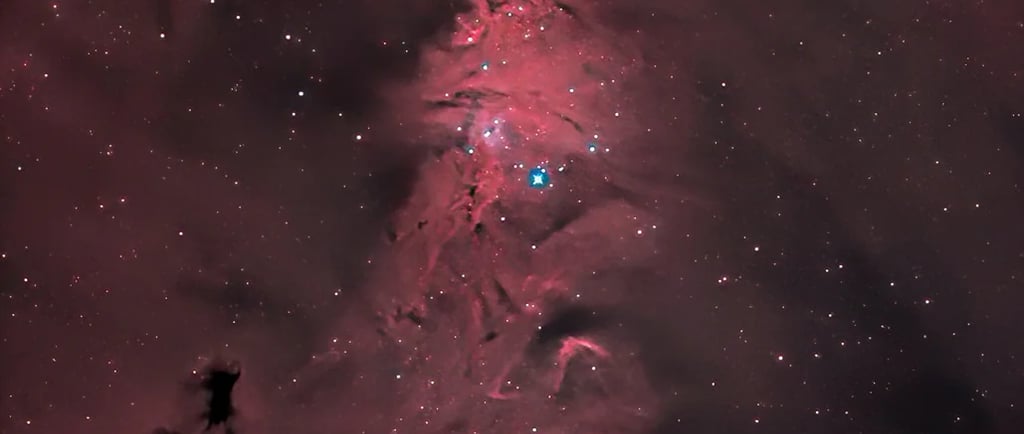NGC 2264: The Cone Nebula and the Christmas Tree Cluster


Introduction to NGC 2264
The universe is a treasure trove of fascinating celestial phenomena, and one such marvel is NGC 2264, commonly referred to as the Cone Nebula. This mesmerizing nebula is situated approximately 2,500 light years away in the constellation Monoceros, and it spans about 7 light years in length. It is an example of a stellar nursery, where new stars are being born, illuminated by the intense radiation from young stars.
Understanding the Structure of the Cone Nebula
The Cone Nebula is particularly noted for its distinct conical shape, resulting from a dense cloud of gas and dust that obscures the light from the stars behind it. This beautiful structure showcases stunning contrasts where light meets dark, creating a captivating visual for astronomers and enthusiasts alike. The nebula's formation is primarily driven by the stellar winds generated from the energetic radiation emitted by its nearby young stars, which ultimately shapes its contours.
The Role of the Christmas Tree Cluster
Accompanying the Cone Nebula is the Christmas Tree Cluster, named for its resemblance to an evergreen tree. This cluster is a group of young stars that, when viewed from Earth, appears to form the shape of a cosmic Christmas tree. The Christmas Tree Cluster plays a crucial role in understanding the processes that lead to star formation, as it provides an excellent case study of how stellar birth occurs in a complex environment. The stars within the cluster are key contributors to the radiation that illuminates the Cone Nebula, creating a vibrant tapestry of light and color.
Investigation of both NGC 2264 and the Christmas Tree Cluster gives astronomers significant insights into the lifecycle of stars and the evolution of nebulae. These cosmic wonders are active laboratories for studying stellar phenomena, further enhancing our comprehension of the universe's intricate workings.
In conclusion, NGC 2264 and its associated Christmas Tree Cluster not only captivate with their stunning beauty but also serve as vital components in our understanding of cosmic evolution. As we continue to explore these stellar landmarks, we uncover more about the universe's birth and development, painting a richer picture of the cosmos we inhabit.
